Motorola Satellite Series Catalog
This Motorola catalog featured several of the original Iridium devices including the Satellite Series 9500 telephone and the Satellite Series 9501 Pager.
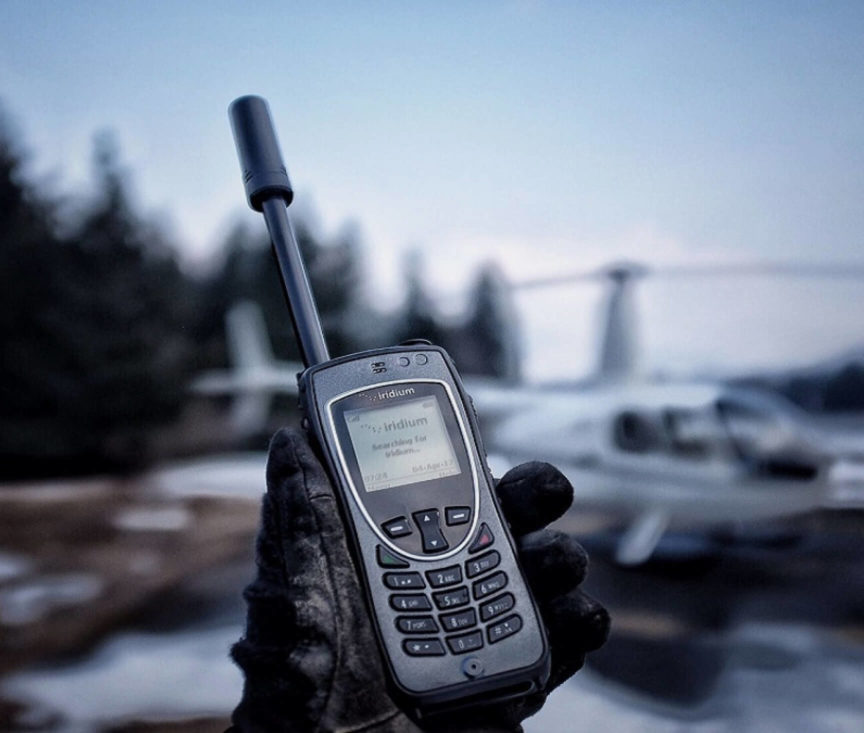
Explore the evolution of Iridium’s product portfolio over the years.
From the early days of Motorola through the launch of Iridium Certus®. Building upon a legacy of innovation, and years of research and development, Iridium has developed a range of products that have grown to fully utilize the company’s global network. Through partner collaboration, Iridium has been able to identify and manufacture products that fit the needs of end-users across the globe on land, at sea, and in the air.
Click on any of the products below to learn more about their role in Iridium’s story.
From the initial launch of the Iridium® network in the late 1990s to today, Iridium has a history of product innovation to address customer needs. As the company grew, and its customer base along with it, Iridium continued to produce high-quality, market-ready products for voice and data communications.
Iridium started as a project with Motorola and later a subsidiary of the company. The original system went live on November 1, 1998. Click here to view the press release announcing the official service launch.
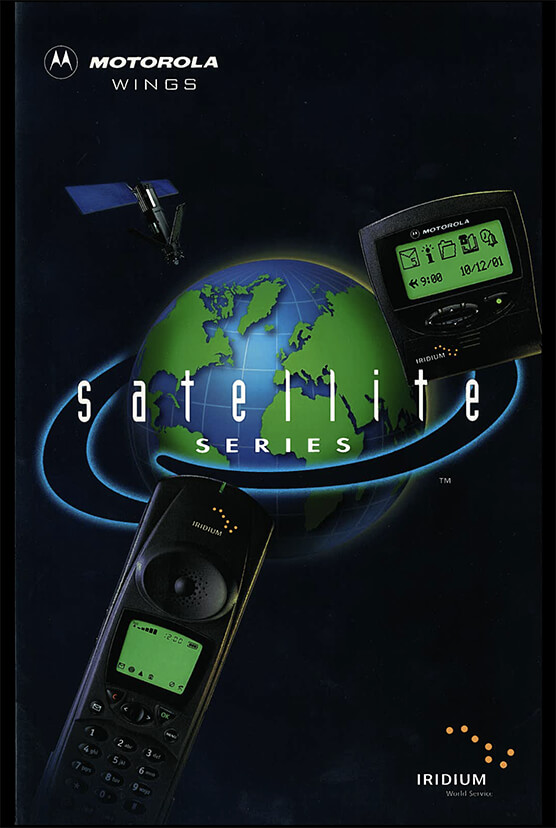
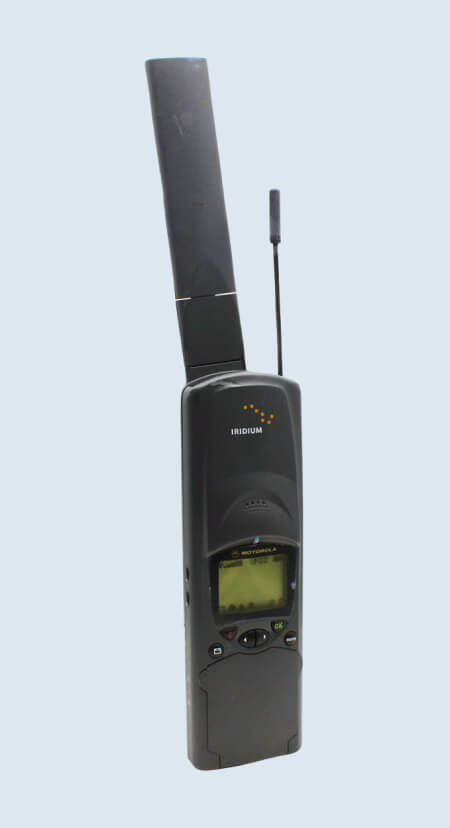
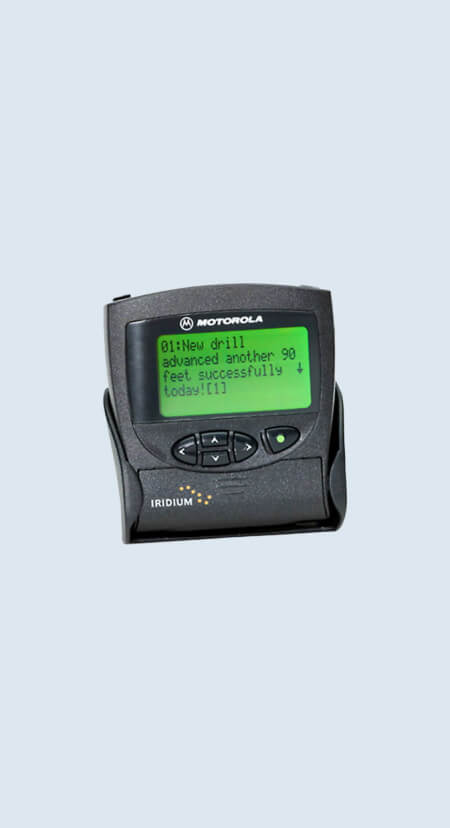
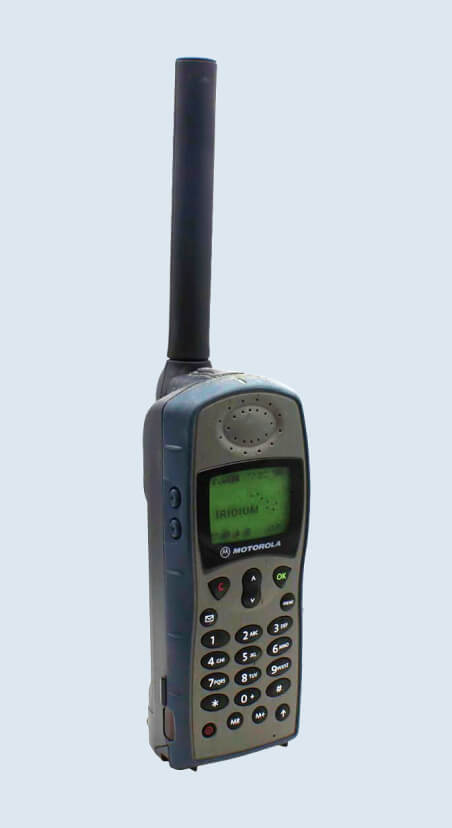
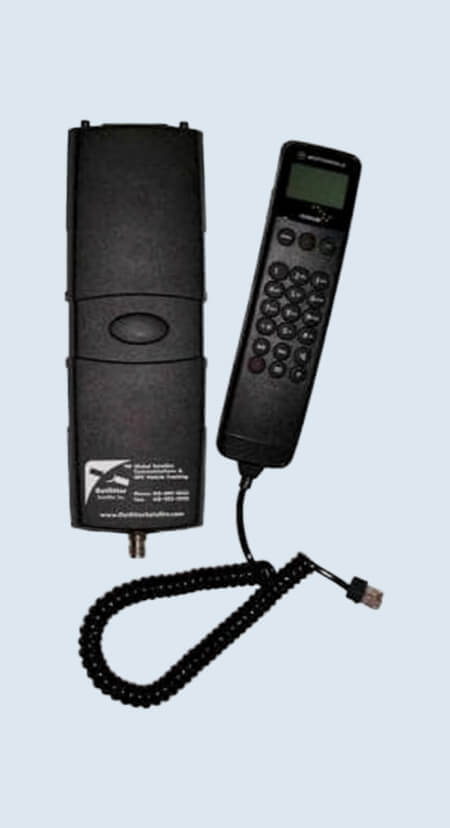
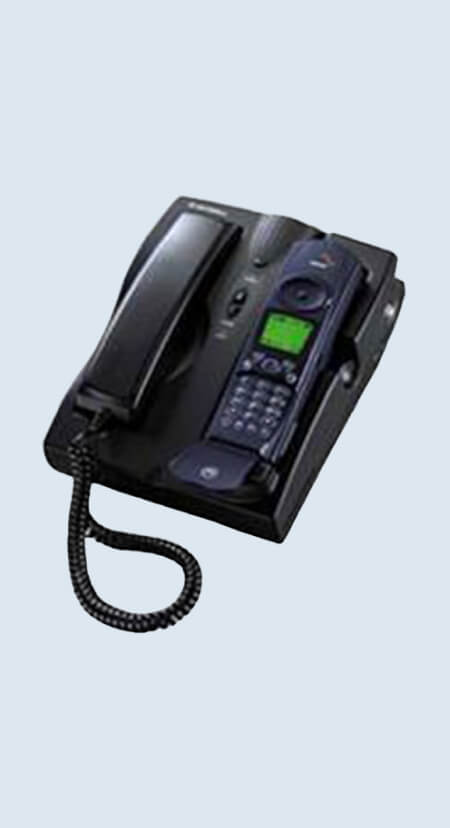
In addition to the Motorola products, the original Iridium project also enabled several pieces of hardware developed by Japanese manufacturer Kyocera.
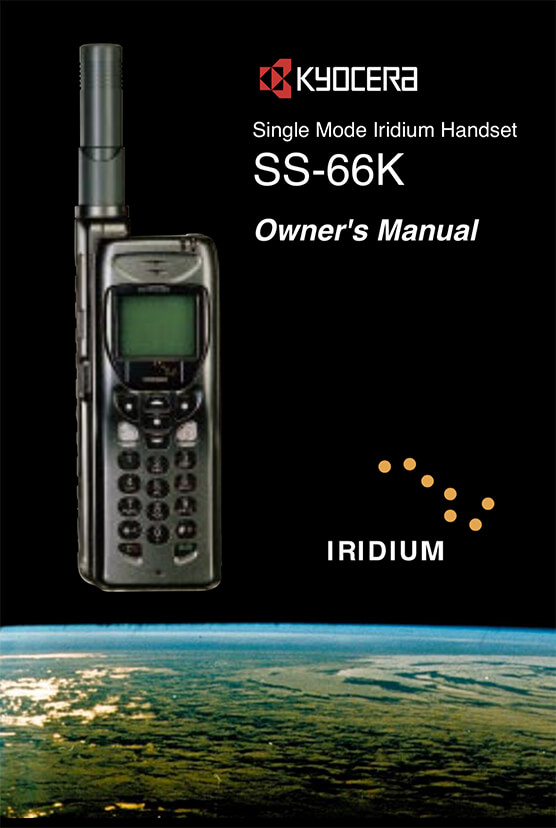
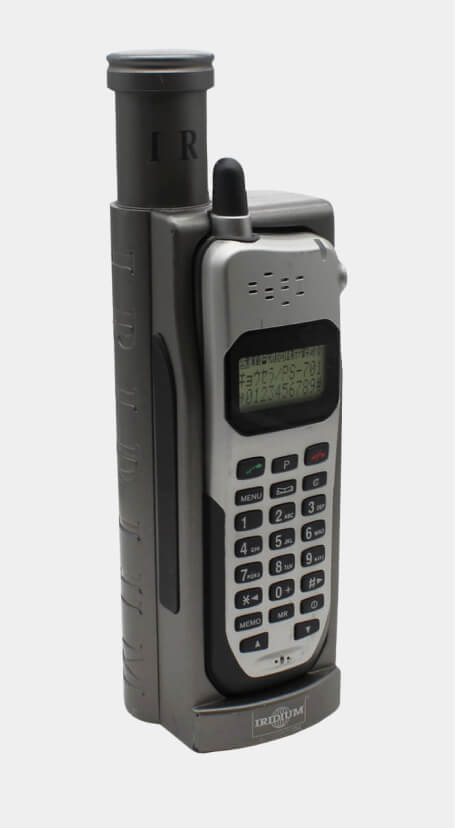
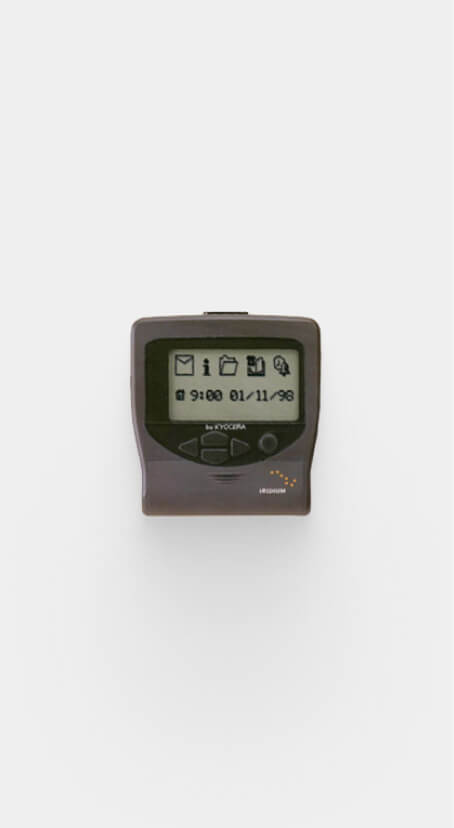
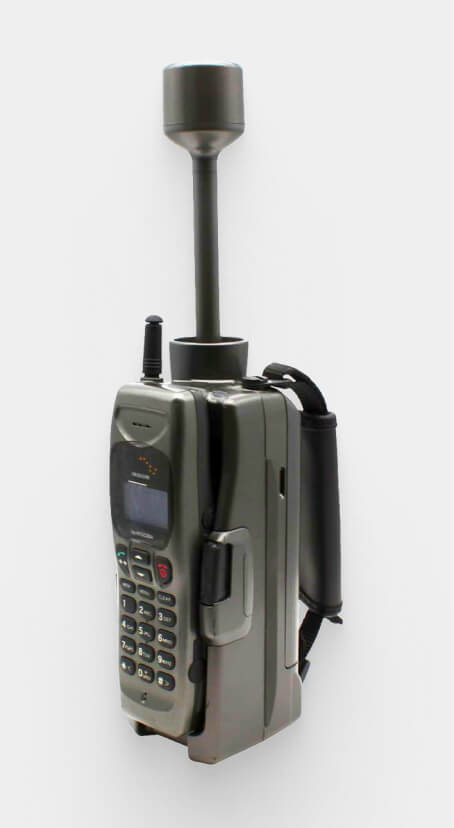
After separating from Motorola, Iridium continued to create devices that relied on Iridium’s global network, with an initial focus particularly on U.S. Department of Defense applications.
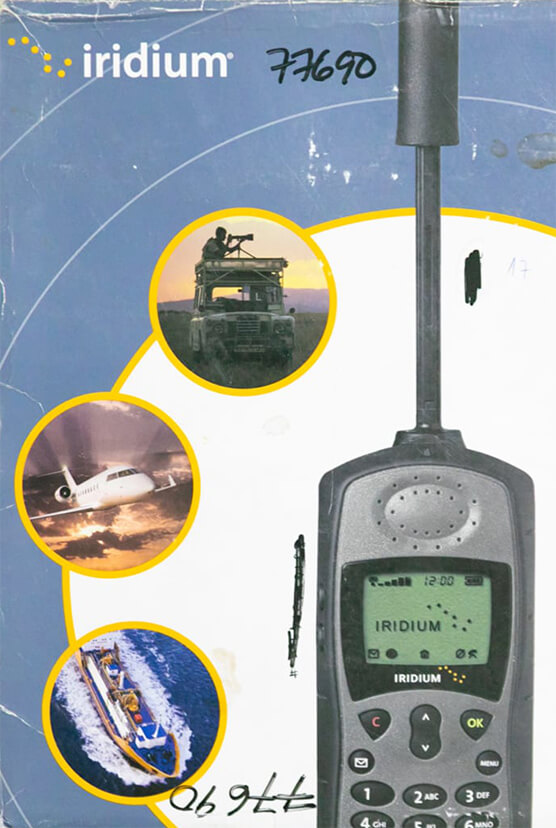
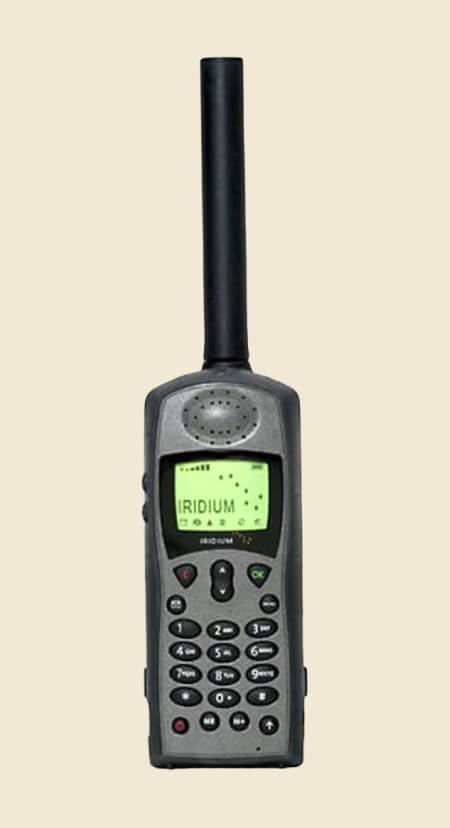
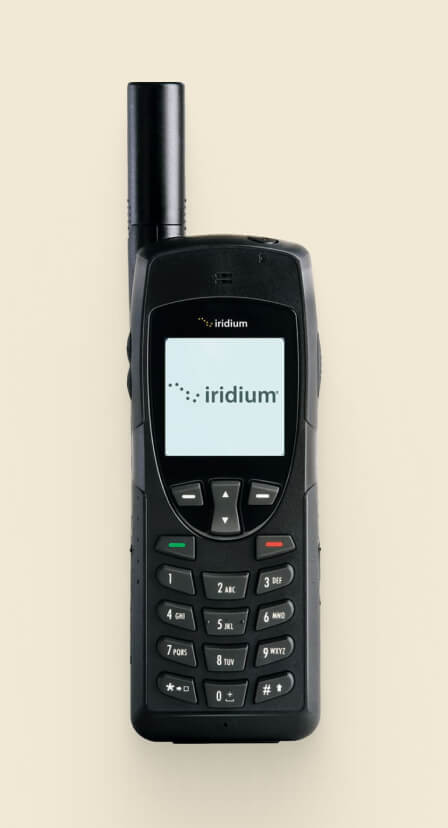
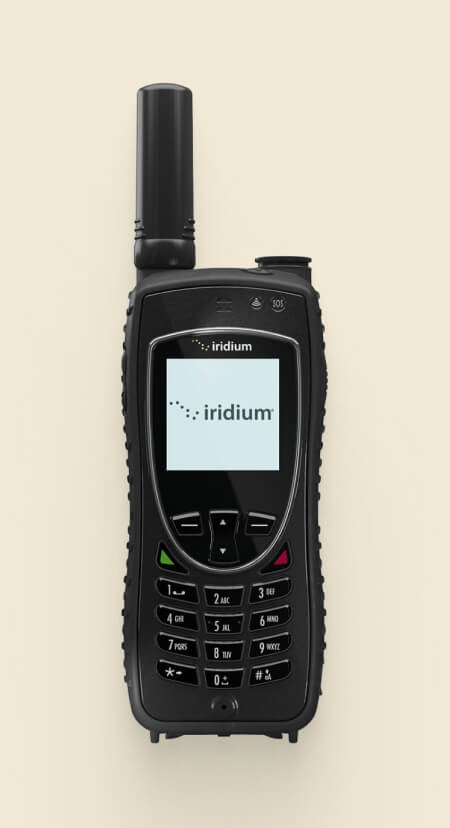
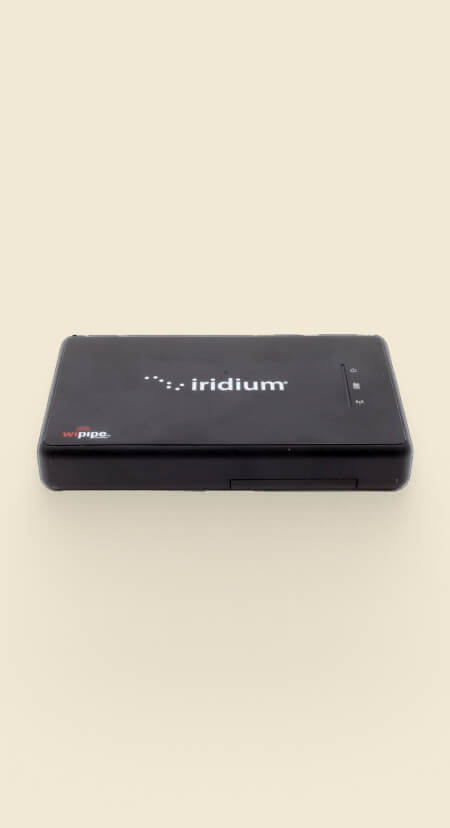
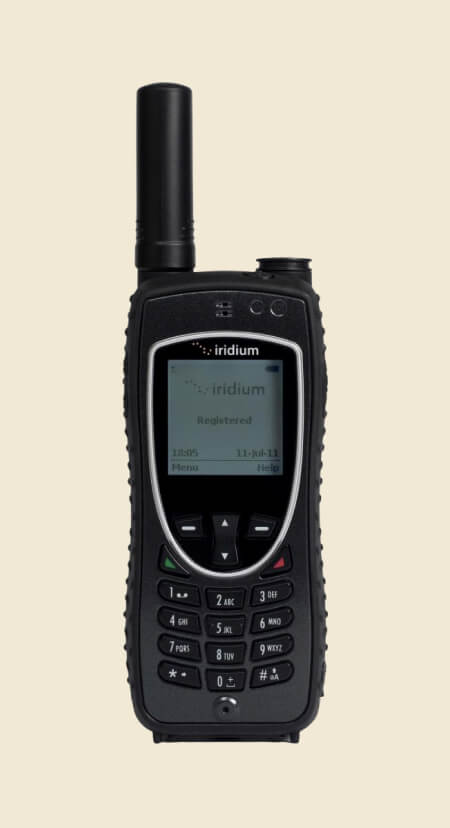
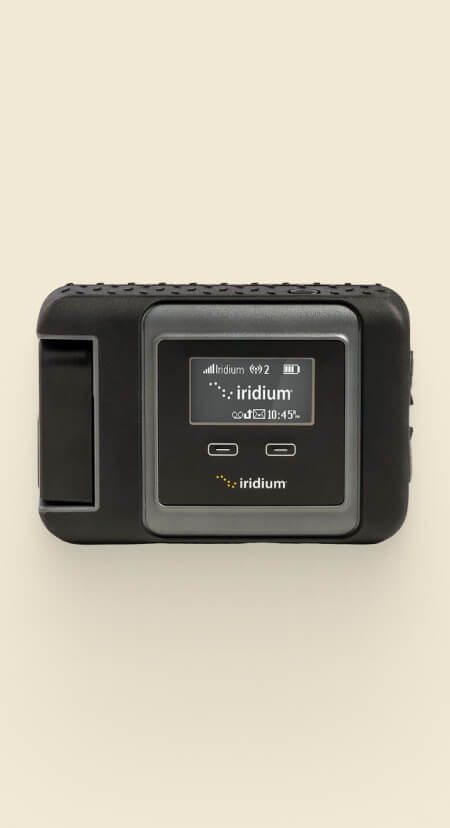
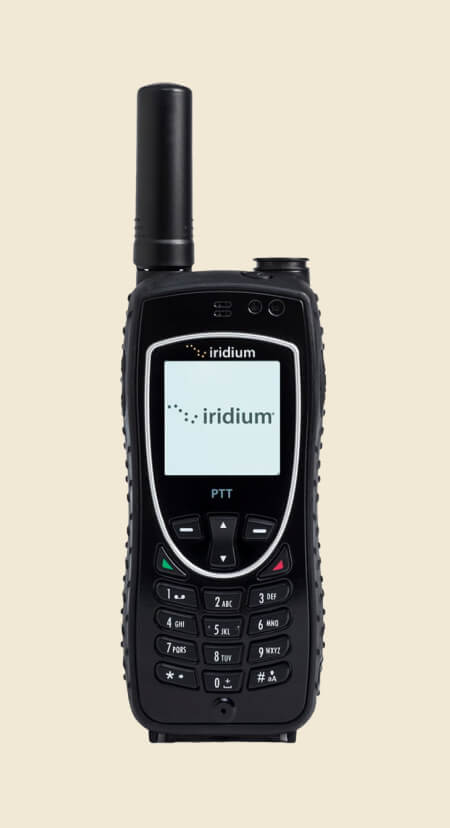

The Distributed Tactical Communications System (DTCS) was developed for the U.S. Department of Defense, particularly the U.S. Marine Corps, out of a need for additional Over-The-Horizon (OTH) push-to-talk (PTT) capabilities during the conflicts in Afghanistan and Iraq.
To provide secure, highly-reliable netted voice and data communications for U.S. government subscribers, the DTCS tactical radio introduced secure PTT capabilities over the Iridium network, for the first time providing Beyond Line-Of-Sight (BLOS), On-The-Move (OTM), OTH one-to-many communications for U.S. military missions. DTCS also provided real-time situational awareness with the ability for users to transmit their position location information (PLI). The development was done in three phases:
As phase three concluded, the structure of the DTCS system was used to create Iridium’s global commercial PTT service.
The transceivers at the heart of Iridium-built products have also paved the way for Iridium’s industry-leading partners to develop the types of data communications products that customers across industries need.
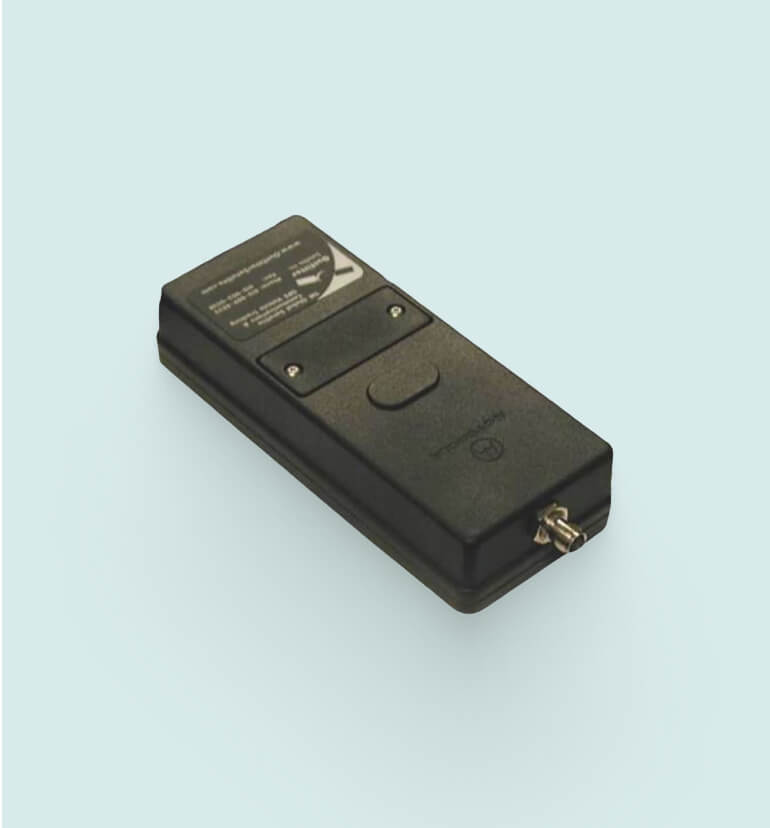
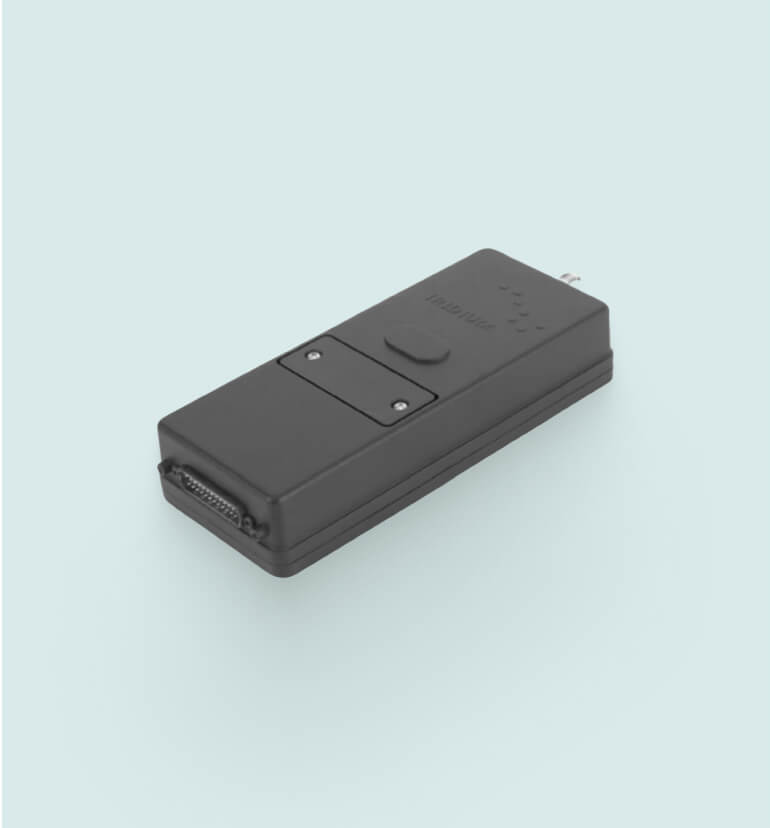
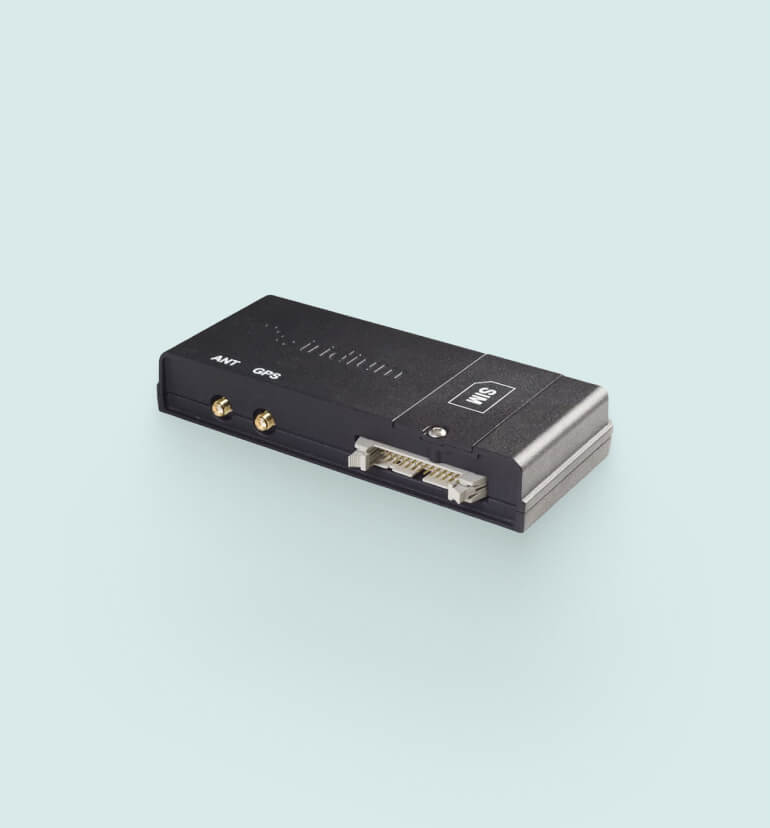
As the way people connected changed, Iridium continued to innovate to address new customer needs, developing products to provide broadband data services anywhere in the world.
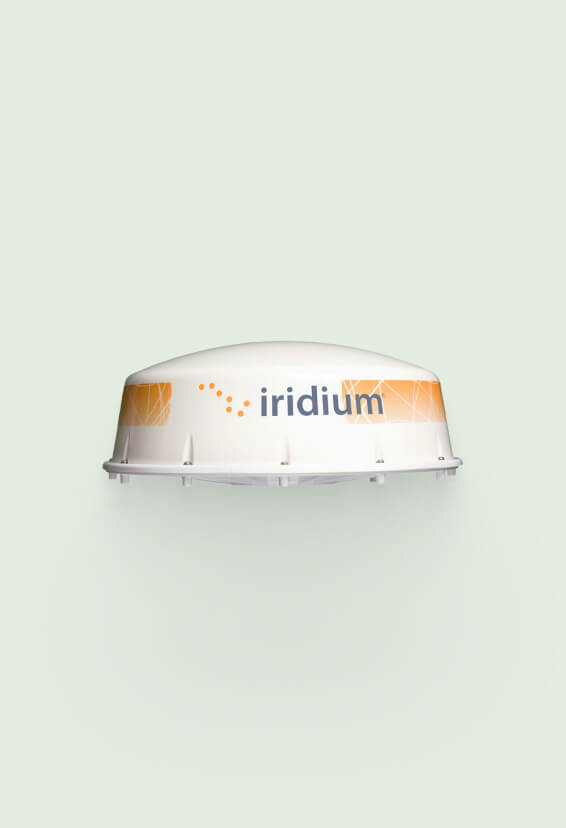
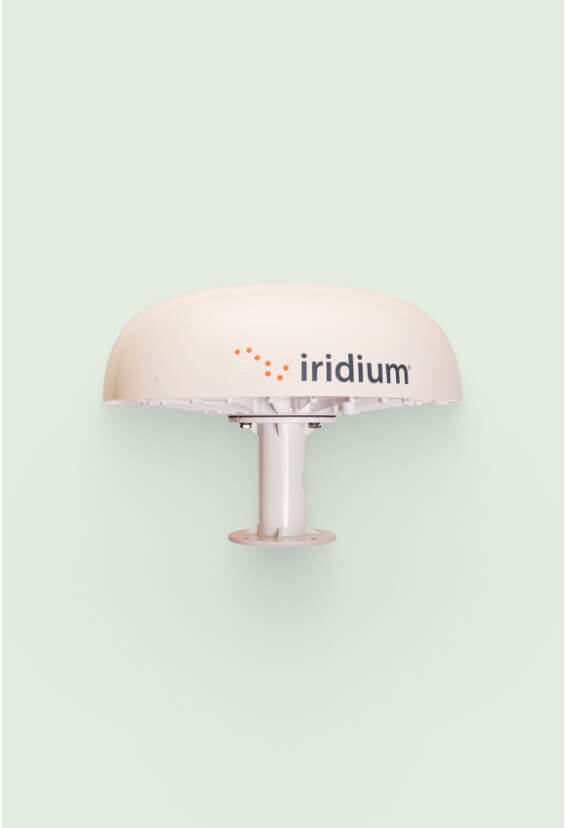
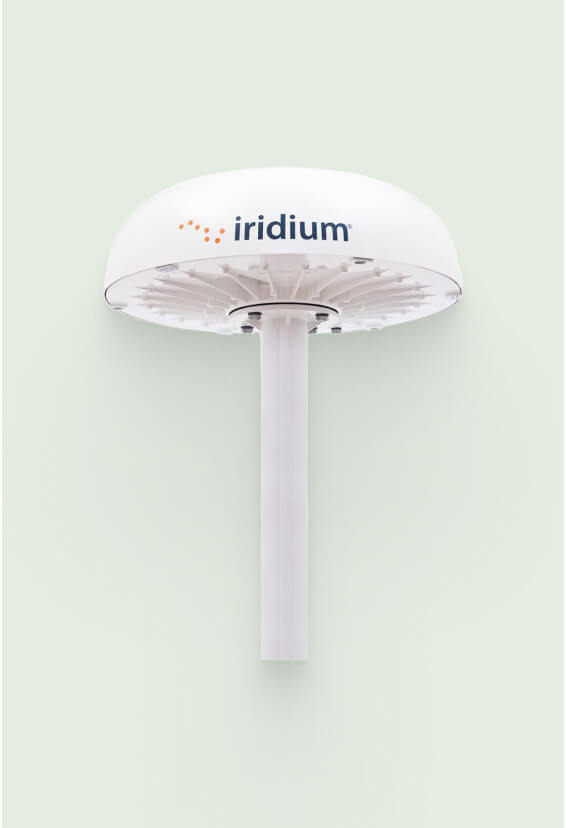
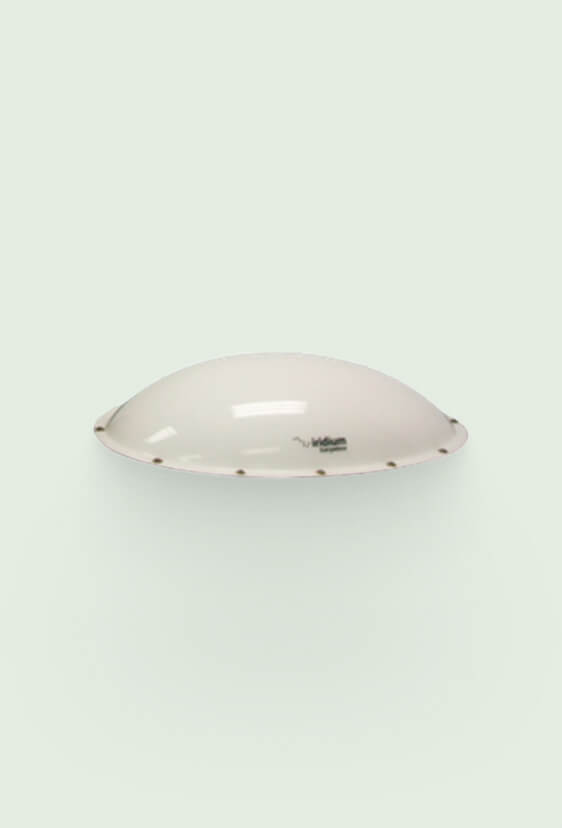
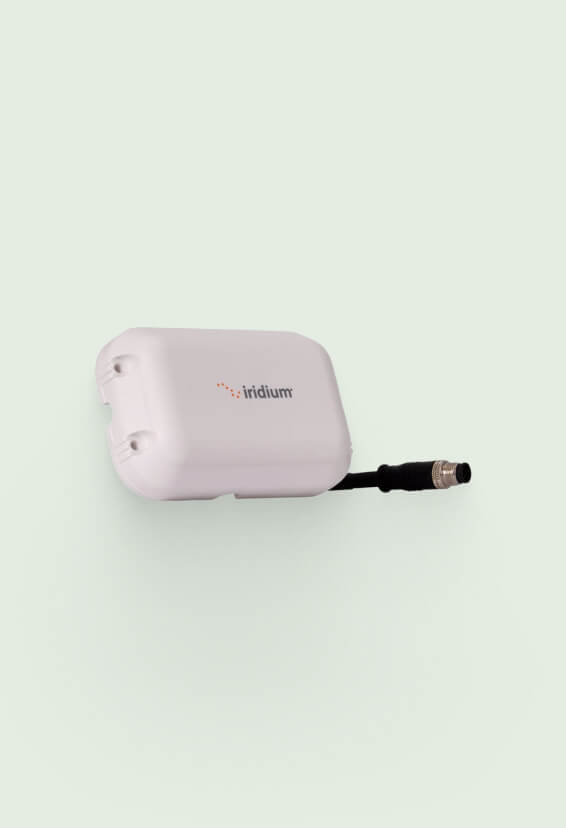
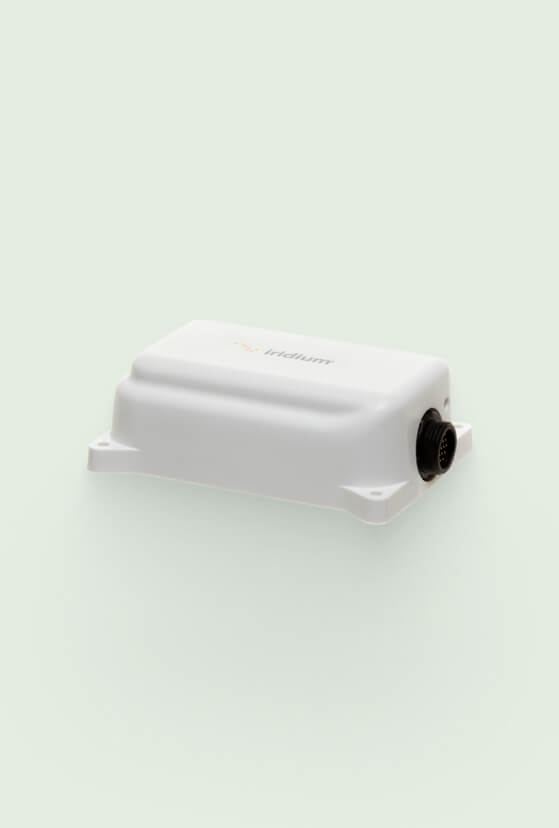
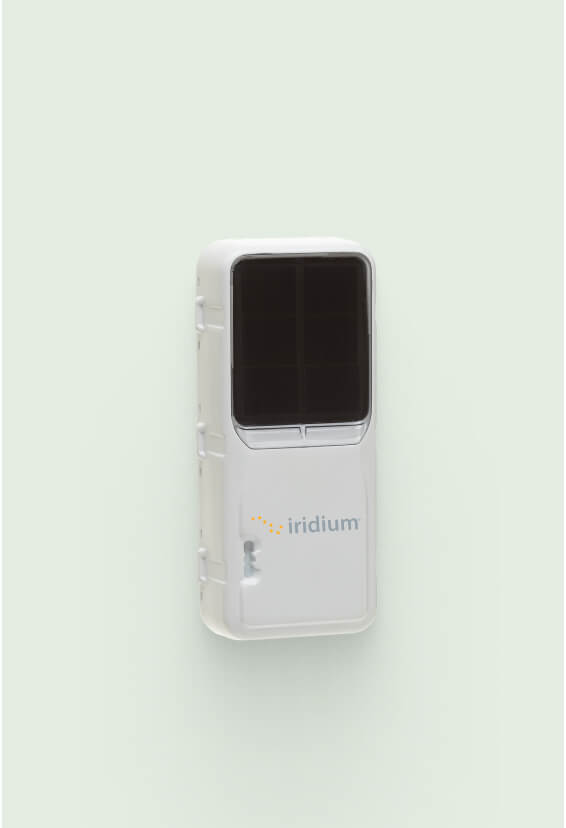
As Iridium continued to innovate and create products for its partners and customers, the company also made a strategic decision to invest in its core technologies.
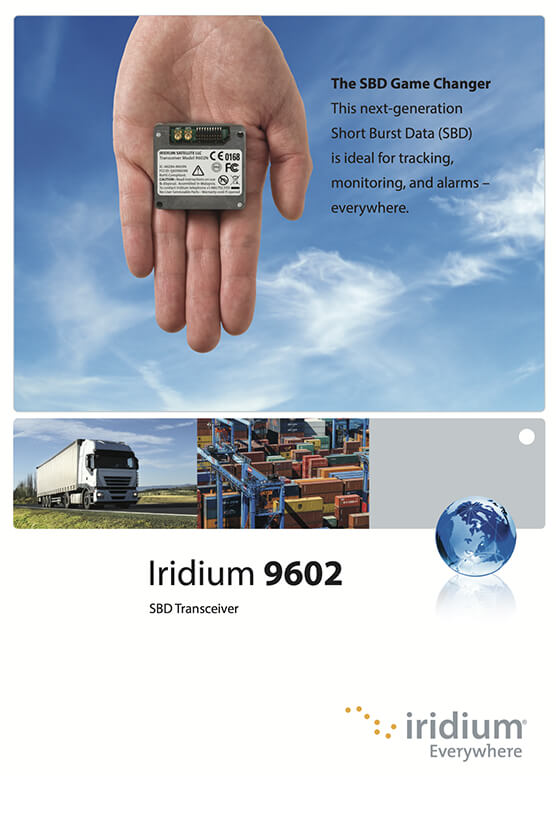
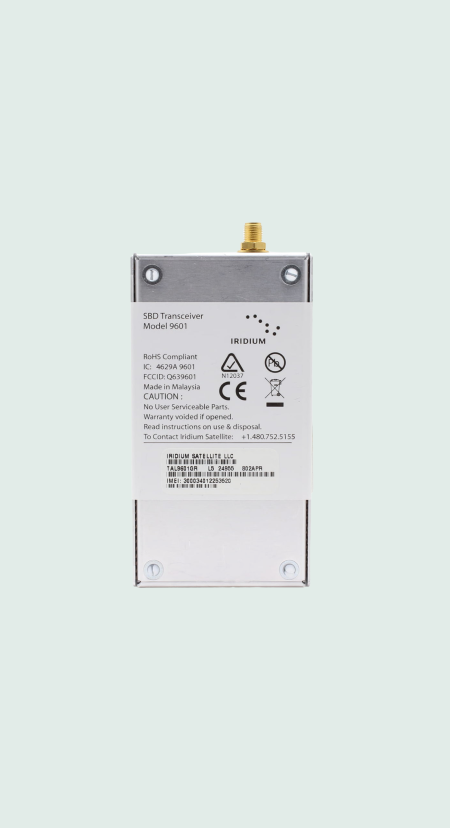
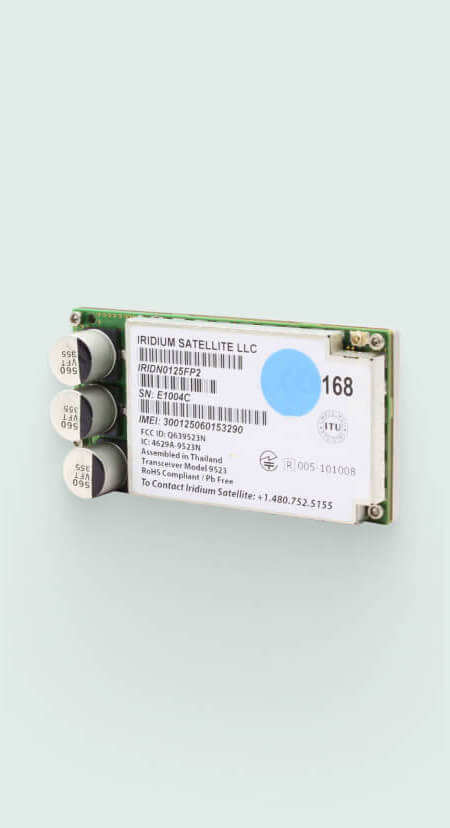
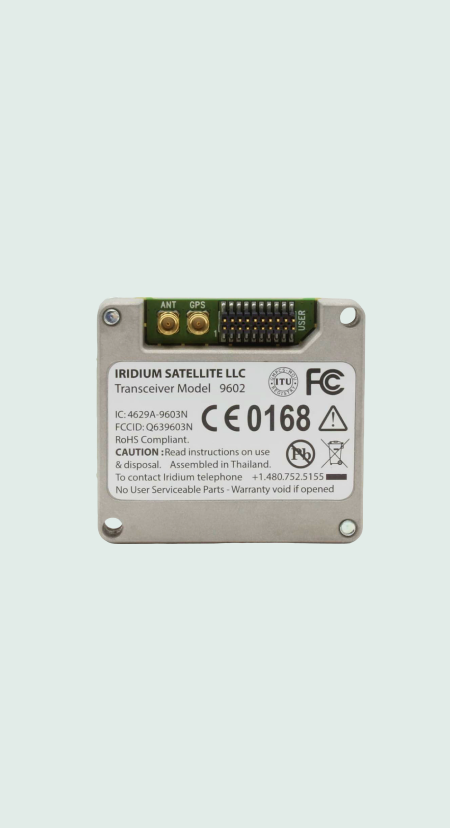
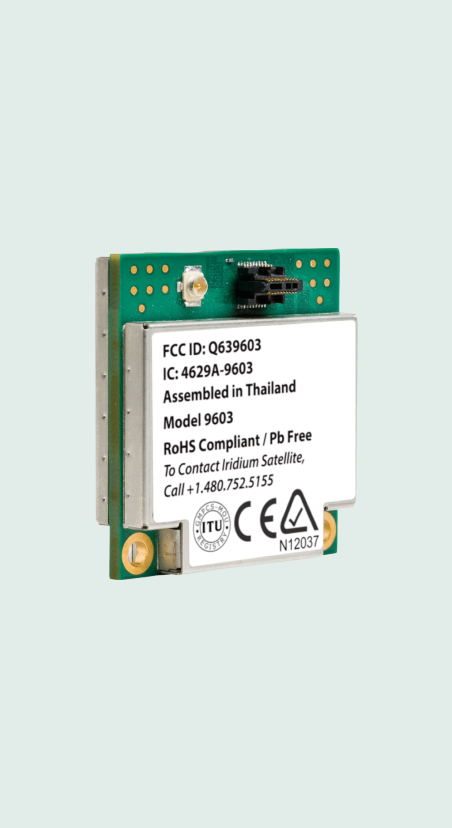
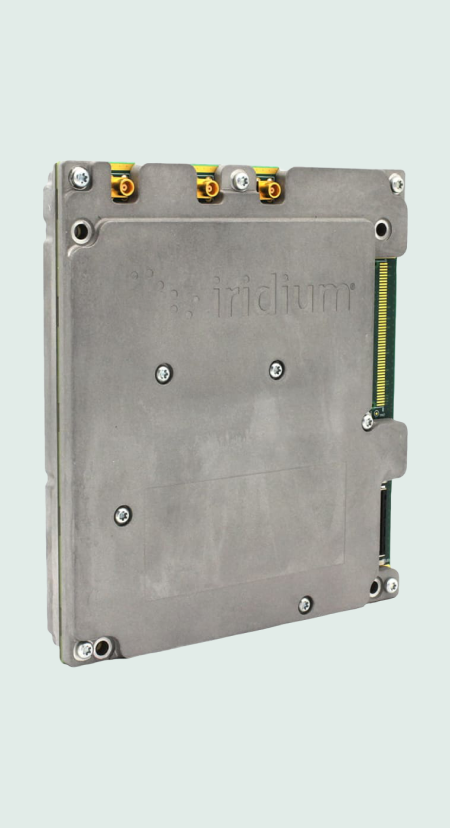
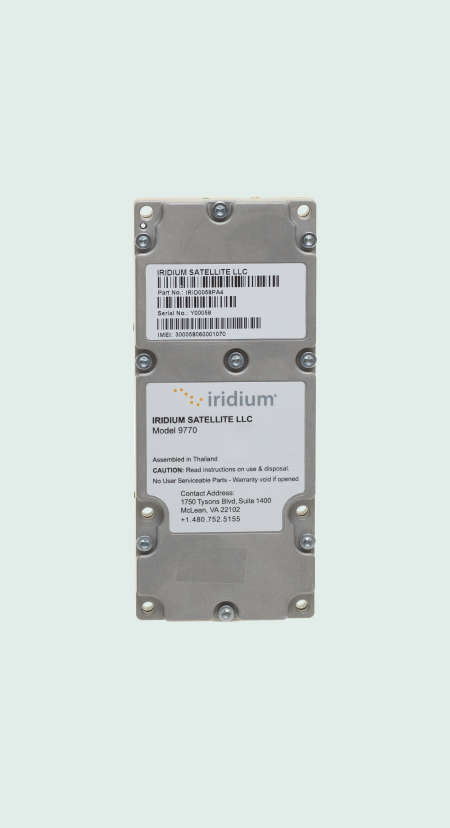
Iridium Certus was introduced as a flexible platform designed to enable solutions that would scale to meet the size, weight, and power requirements of users. The platform enabled Iridium to compete in the satellite broadband space, with the fastest L-band speeds available, and introduced a new service class to the industry: midband. In 2019, Iridium Certus won the "Top Connected Platform" Mobility Satellite Innovation Award from the Mobile Satellite Users Association (MSUA).

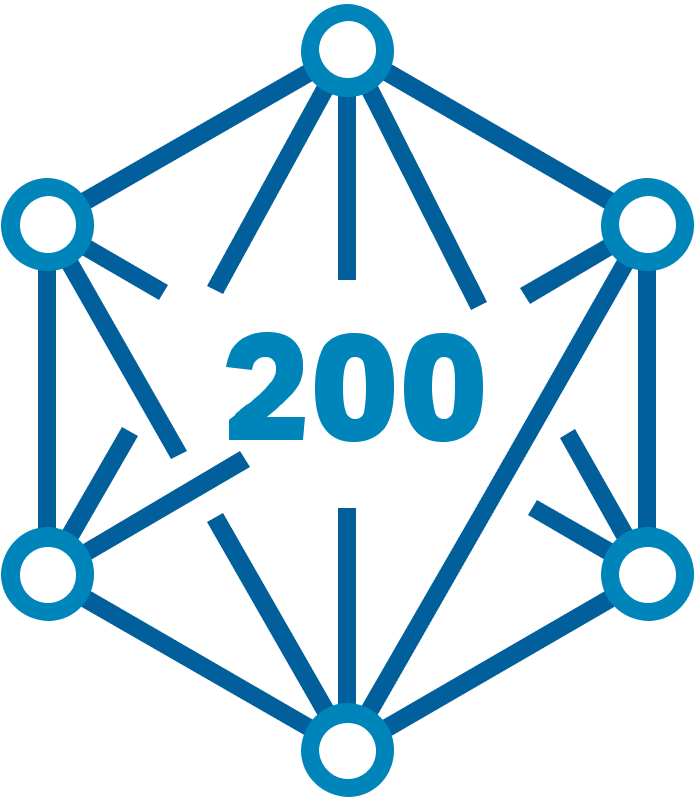
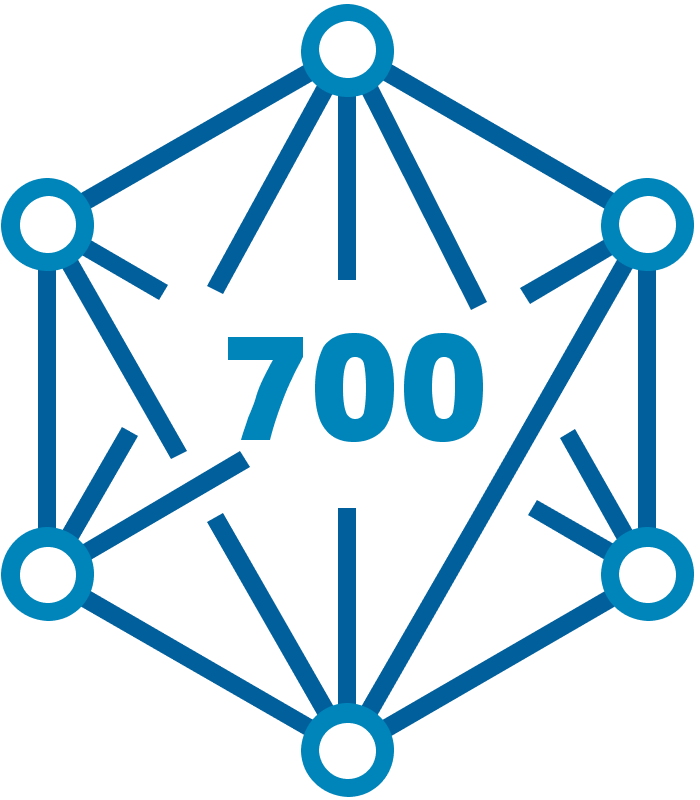
In December 2020, Iridium launched its Global Maritime Distress and Safety System (GMDSS) service, breaking a decades-long monopoly of satellite GMDSS services. Like an international SOS system for ships, GMDSS provides life-saving assistance in maritime emergencies. The introduction of Iridium GMDSS brought the first truly global system for mariners, offering coverage even in polar regions where the service has never before been available.
GMDSS is governed by the International Maritime Organization’s (IMO) Safety of Life at Sea (SOLAS) convention. After receiving certification from the IMO in 2018, Iridium continued working with their regulator, the International Mobile Satellite Organization (IMSO), on implementing the new system ahead of its launch.
At launch, Iridium GMDSS was available through partner Lars Thrane’s LT-3100S terminal, which consolidated voice, data, and maritime safety information (MSI) transmission in one device.
Iridium and its partners are always creating new products to better serve current and potential customers. As technologies and use cases change, these products will continue to evolve to meet the needs of the future.

This Motorola catalog featured several of the original Iridium devices including the Satellite Series 9500 telephone and the Satellite Series 9501 Pager.

The first commercial satellite phone produced by Iridium (then a project within Motorola), the Motorola Satellite Series 9500 Telephone was the first wireless phone connected to a global network. To launch Iridium’s commercial service, Vice President Al Gore made the ceremonial first call using the Satellite Series 9500 on November 1, 1998 to Gilbert Grosvenor, the great-grandson of Alexander Graham Bell and chairman of the National Geographic Society.
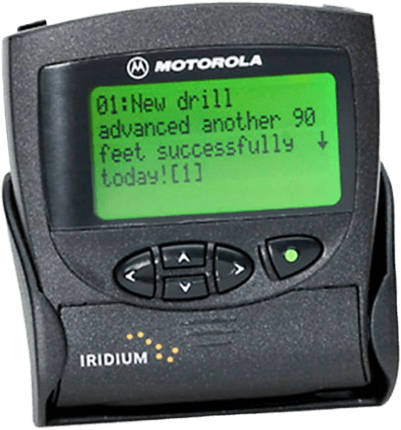
The Motorola Satellite Series 9501 Pager was the first personal message receiver to offer global connectivity. Unlike most pagers that connected to ground-based towers, the Satellite Series 9501 utilized Iridium's global satellite network. When combined with a satellite phone connected through the Iridium network, the Satellite Series 9501 pager allowed business and leisure travelers to stay connected while on the move.

The Motorola 9505 was the second (and final) mobile satellite phone produced by Motorola’s Iridium project. Manufactured from 1999 to 2002, the phone’s new design was smaller, lighter, and more resistant to water, dust, and shock, making it better for more rugged conditions. This new model also featured a longer battery life, making it more accessible for individuals in industrial or isolated conditions.
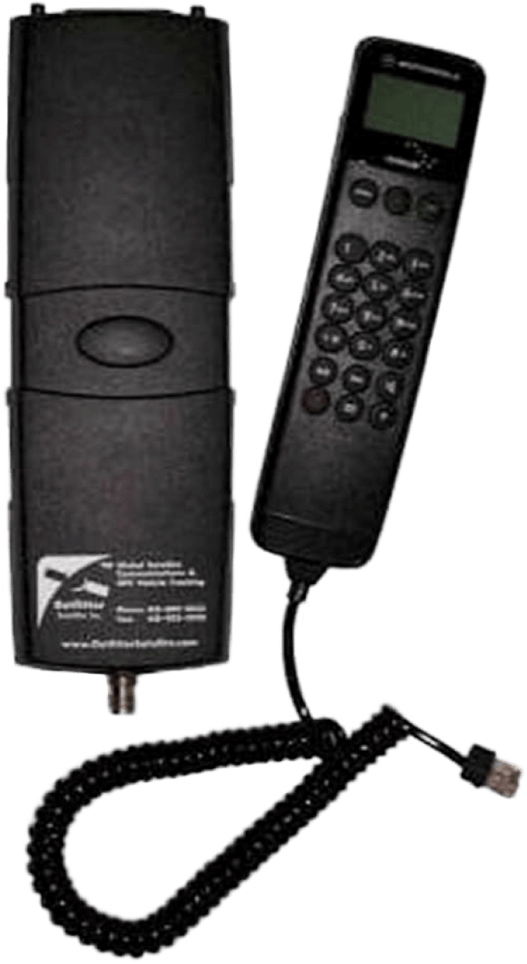
The Motorola 9520 was a permanently installed satellite telephone with hands-free functionality designed for in-vehicle or on-ship operation with an external antenna. During development, the Motorola 9520 was put through rigorous durability tests, including temperature, humidity, shock, dust, vibration, and drop tests, to ensure its performance in various mobile and maritime applications.
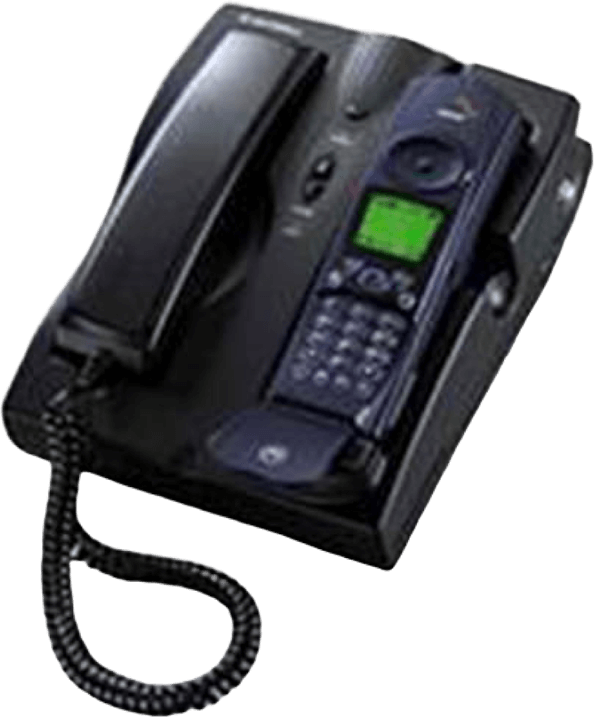
Compatible with Motorola’s Satellite Series 9500 and Satellite Series 9505 portable phones, the 9570 Portable Dock provided charging for satellite phones in fixed or maritime applications. This docking station included a lightweight handset and speakerphone for additional communication options.
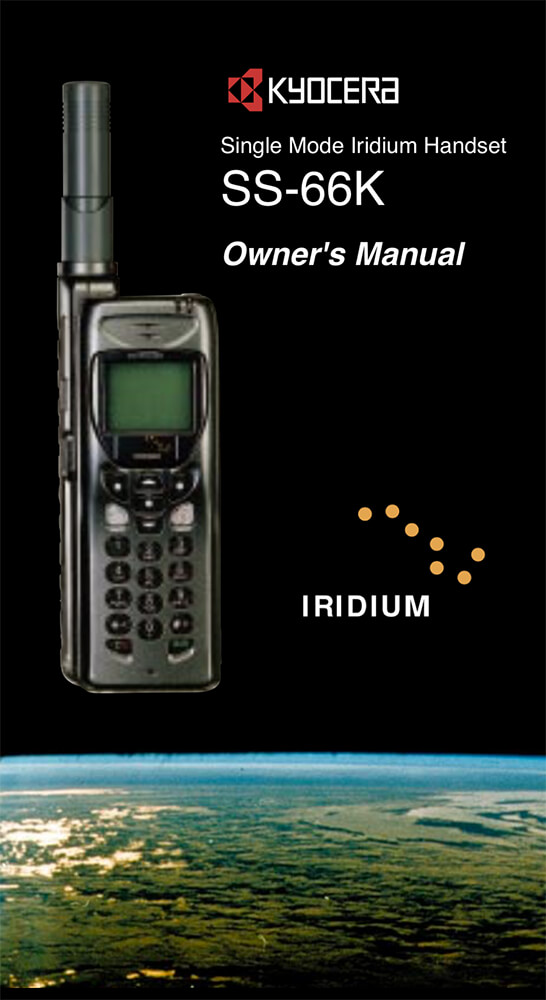
This owner's manual for the SS-66K Telephone shows how partner products were co-branded between Iridium and the device manufacturer.
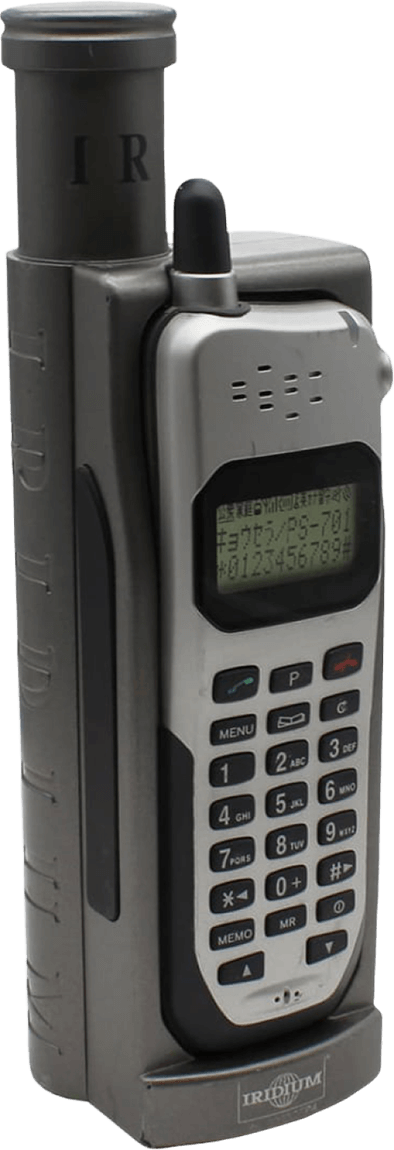
The Kyocera SS-66K satellite phone was the first model of satellite phone released by Iridium. This handset was smaller and lighter than the Motorola 9500 telephone released shortly after it.
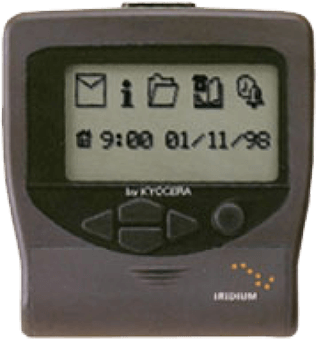
Like its Motorola counterpart, the SP-66K Iridium Pager enabled data and message communications anywhere around world.

The SD-66K Iridium Dual Mode Adapter was an extension unit for KI-G100 GSM mobile phone that provided access to the Iridium network for global connectivity. The dual-mode adapter was a device that integrated with three Kyocera cellular handsets to access the Iridium network and Iridium Satellite pager.
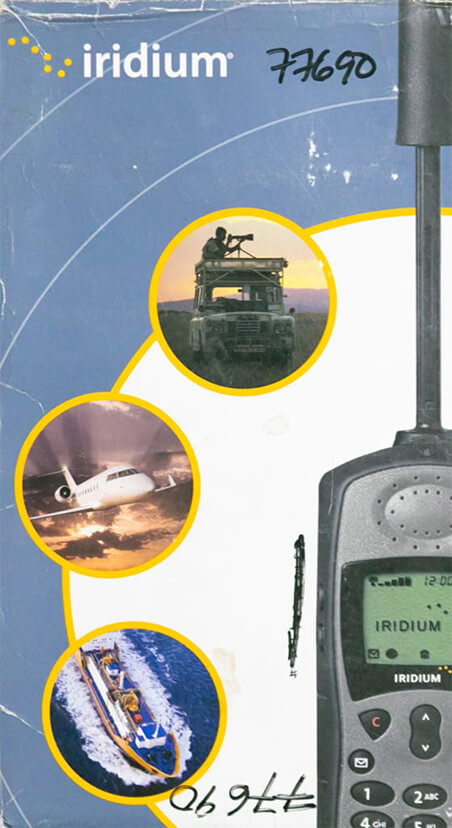
The Iridium 9505A product packaging displayed the phone's potential uses for the land mobile, aviation, and maritime markets.

The Iridium 9505A was the first phone produced by Iridium as an independent company. Manufactured in the United States, this model was externally identical to the Motorola 9505; however, an auxiliary Iridium Security Module created by Iridium and General Dynamics exclusively for U.S. Department of Defense subscribers enabled secure, global communications through a dedicated U.S. government gateway. Iridium began production of the Iridium 9505A in 2002, and continued through 2009, ending shortly following the introduction of Iridium’s next-generation mobile satellite phone, the Iridium 9555.

The Iridium 9555 launched in 2008 and is still in production today. This new model featured a much smaller, internal antenna, greatly reducing the profile of the device compared to the previous models with externally stored antennas. Additionally, the Iridium 9555 was lighter and more compact than Iridium’s previous mobile phone models and featured an integrated speakerphone for easier communication.

Designed for tough conditions, the Iridium Extreme was introduced in September 2011 as the first Iridium handheld with military-grade durability. For end-users facing harsh conditions, Iridium added jet-water, shock, and dust resistance, as well as a speakerphone and a wind-resistant microphone to its features. The Iridium Extreme also introduced an SOS button to the Iridium handheld product line. With GPS connectivity, this device provides the necessary safety features and reliable, global connectivity of the Iridium network to those who need them the most.
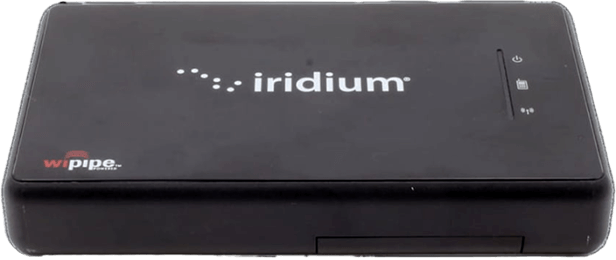
A predecessor to the Iridium GO! device, Iridium AxcessPoint plugged into the Iridium 9505, Iridium 9555, or Iridium Extreme, turning the handset into a Wi-Fi hotspot. This data session allowed users to connect their smartphones, tablets, and laptops to the Iridium network for email and web browsing on multiple devices anywhere in the world.

The Iridium 9575A was built specifically for U.S. government use under Iridium’s contract with the U.S. Department of Defense. The device is nearly identical to the Iridium Extreme, with additional security measures for protected use through the dedicated U.S. DoD gateway.
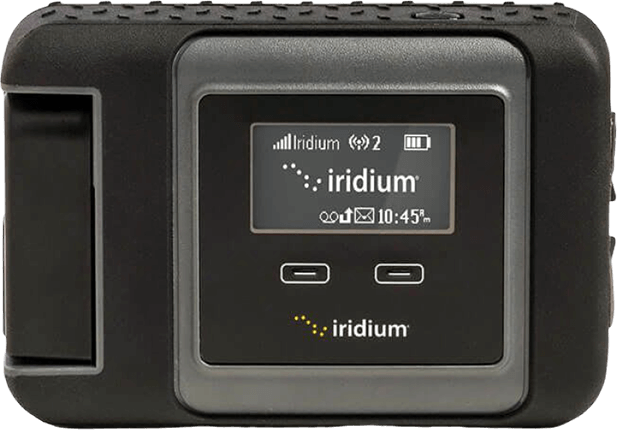
As the way people connected changed, Iridium continued to innovate to address new customer needs. Introduced in 2014, Iridium GO! allows global users the ability to turn their smartphones into satellite devices -- making calls, sending text messages, accessing social media, and using other apps anywhere in the world. With a compact, portable design and military-grade durability, Iridium GO! appeals to international travelers and adventurers.

The Iridium Extreme Push-To-Talk (PTT) was built upon the existing framework of the Iridium Extreme, with the added feature of PTT capabilities. The PTT service, which was originally developed for the U.S. Department of Defense’s Distributed Tactical Communications System (DTCS), is used worldwide by governments, non-governmental organizations, and enterprises to support military applications, natural resource excavations, and first response activities.
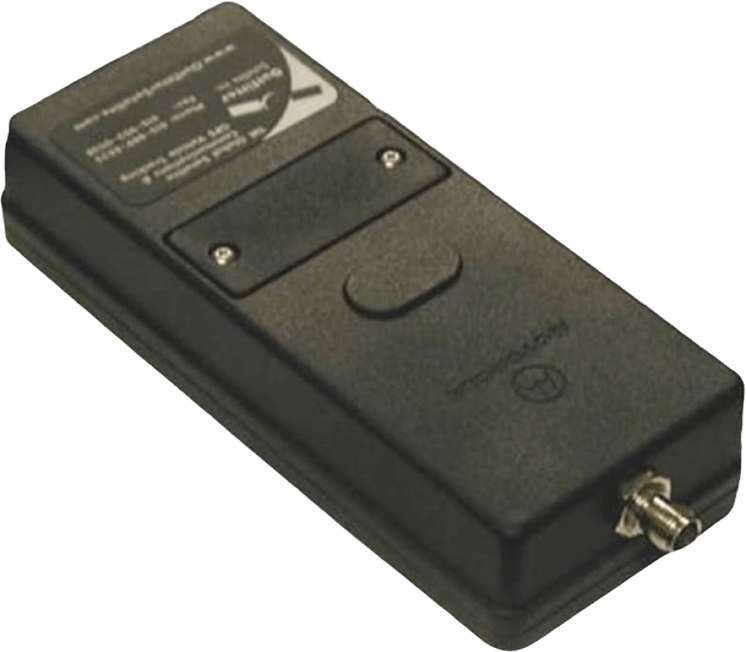
The Motorola 9522 was developed by Motorola for incorporation into a final Iridium subscriber product that would provide the power, antenna, and user interface. This transceiver was built around the functional capabilities of the Motorola 9505 handset, although the 9522 was always powered externally (meaning it had no battery metering), did not incorporate a vibrating call alert or ring control, and did incorporate an analog audio interface, unlike the Motorola 9505.
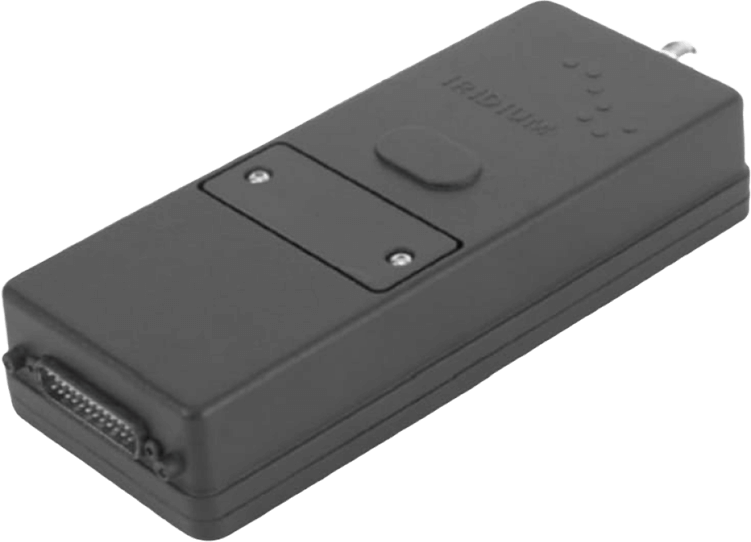
The Iridium 9522A was the first L-Band Transceiver (LBT) created by Iridium after relaunching independently. Like the Motorola 9522, the Iridium 9522A was designed to be integrated into a specific application with other hardware and software to create an Iridium Connected® solution. This transceiver represented the beginning of Iridium’s shift toward relying on its value-added partners to develop solutions for their markets with Iridium technology inside. The LBT, which was designed specifically with the maritime, aviation, and land mobile markets in mind, was ideal for sending and receiving voice and data from anywhere on the planet.
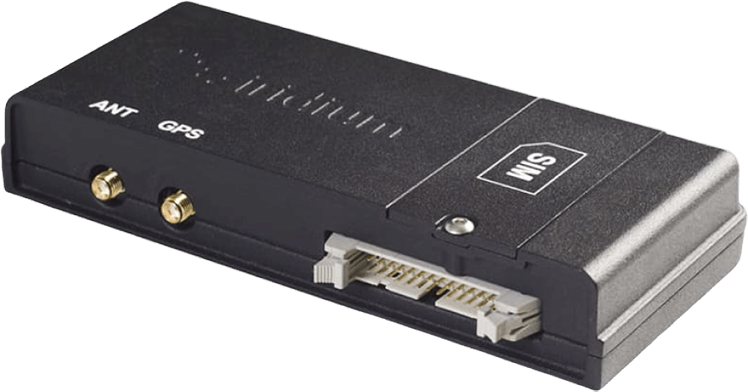
Smaller and lighter than the Iridium 9522A, the Iridium 9522B was Iridium’s second-generation L-Band transceiver designed to easily integrate into any specific application or vertical market. The Iridium 9522B was the functional replacement to the Iridium 9522A, although the mechanical design and electrical connectors differed. When introduced, Iridium made adaptors available, allowing manufacturers to retro-fit existing Iridium 9522A products with this newer transceiver.
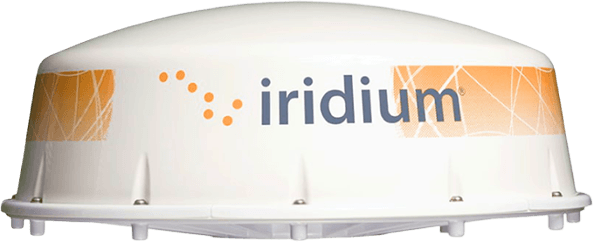
Iridium OpenPort made its debut as both a product and a service. The Iridium OpenPort terminal was the first Iridium device to introduce broadband speeds to maritime users of the Iridium network, providing the only global connection for broadband voice and data. With three individual voice lines and data, Iridium OpenPort offered broadband connectivity where other communications providers could not – anywhere in the world, from pole to pole, including Sea Area A4.
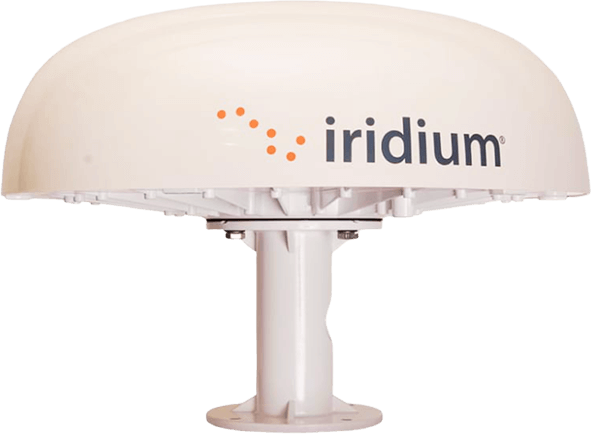
Iridium Pilot was Iridium’s second-generation maritime broadband terminal, continuing to provide the only global connection for broadband voice and data maritime communications. Uniquely designed to keep ships connected through harsh maritime conditions, Iridium Pilot could be easily mounted at any location on a ship’s deck and withstood the effects of the challenging maritime environment. Iridium Pilot enabled three simultaneous voice lines, as well as email, web browsing, and reliable data transmissions. Often, Iridium Pilot was installed as a companion to Very-Small-Aperture Terminals (VSAT) to provide coverage in the locations that VSAT could not.
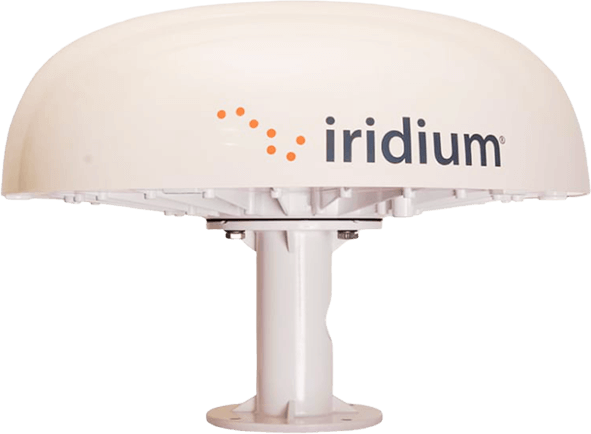
Like Iridium Pilot, Iridium Pilot Land Station was Iridium’s first global solution for terrestrial broadband communications with both fixed and mobile applications. With a nearly identical form-factor to Iridium Pilot, the Iridium Pilot Land Station terminal provided dependable communications to any ground location. Iridium Pilot Land Station was engineered for durability in harsh environments, and often used for disaster recovery, remote humanitarian aid, education, and science and exploration.
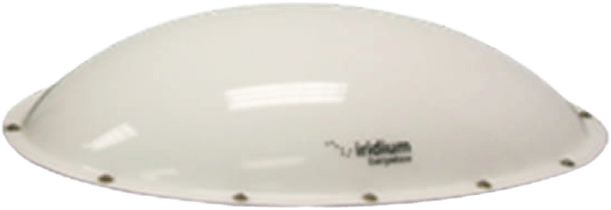
Launched in 2014, Iridium OpenPort Aero provided the first Iridium broadband speeds, up to 128 Kbps, to the aviation market. Developed by partners through an Iridium developer kit, Iridium OpenPort Aero was primarily used on rotorcraft because of its unique ability to function underneath rotorcraft blades, although it was adopted by several fixed-wing applications as well. Iridium OpenPort Aero enabled services ideal for search and rescue missions because of its reliable, global connectivity.
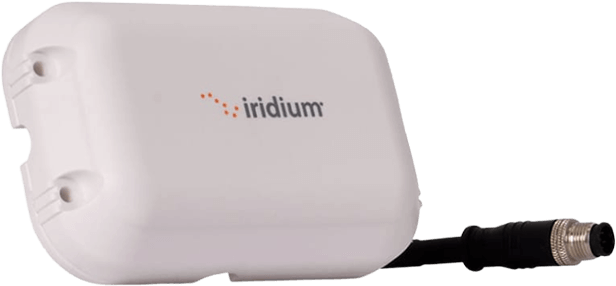
Iridium Edge is a low-cost, ready-to-go satellite communications device that expands connectivity beyond cellular and terrestrial-based networks for Internet of Things (IoT) applications. Iridium Edge enabled value-added partners to innovate by reducing the cost, uncertainties, and complications associated with hardware development, manufacturing, and certification.
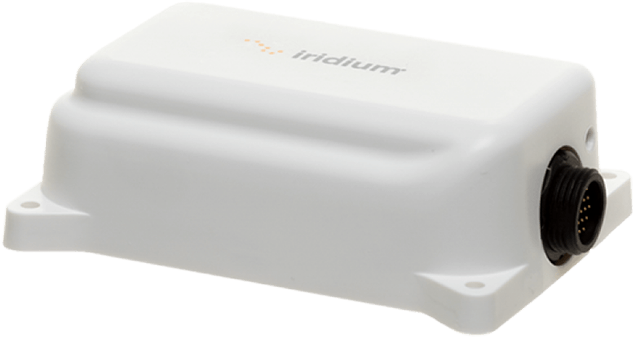
Iridium Edge Pro, an expansion of the Iridium Edge product family, created as Iridium’s first programmable asset tracker and manager. This product was designed for IoT developers to integrate into custom asset management solutions for connectivity through the Iridium network.
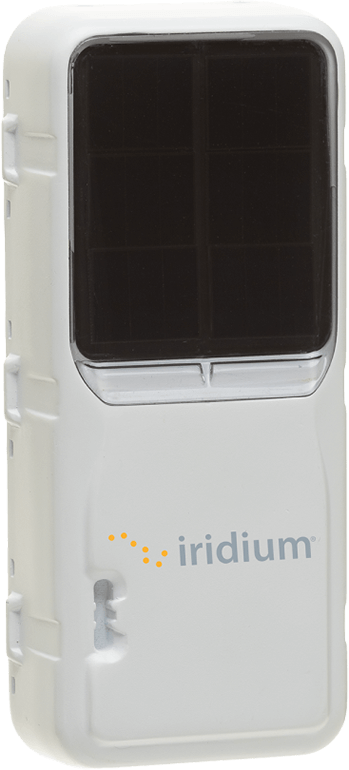
Iridium’s third product in the Iridium Edge product family, the Iridium Edge Solar was developed to provide a simple IoT tracker for people and things. Completely solar-powered, the terminal required no external power source, making it easier for users to integrate it into various remote tracking and monitoring solutions.
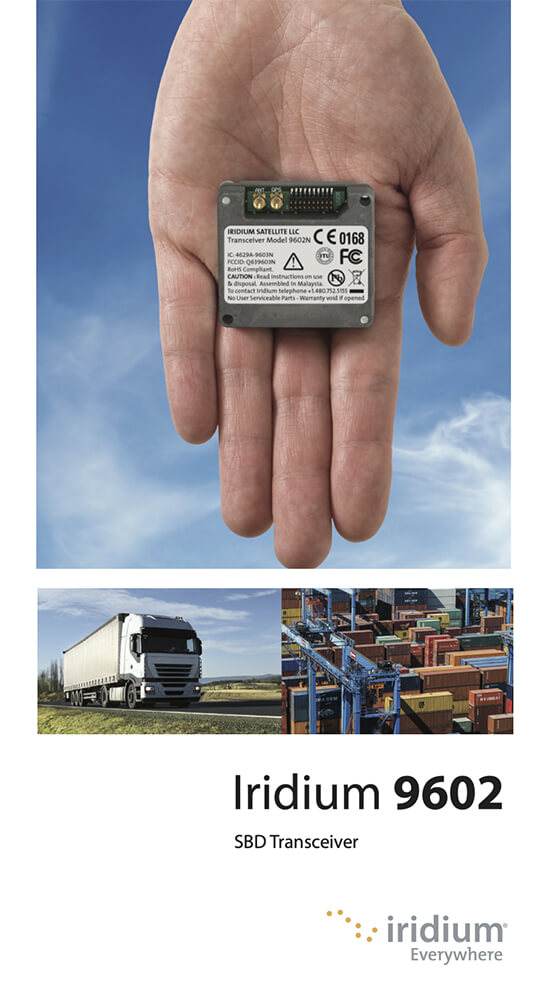
This manual for the Iridium 9602 shows the small form factor of Iridium's core technologies, making it easier for partners to incorporate into other products. The Iridium 9602 is small enough to fit in the palm of your hand.
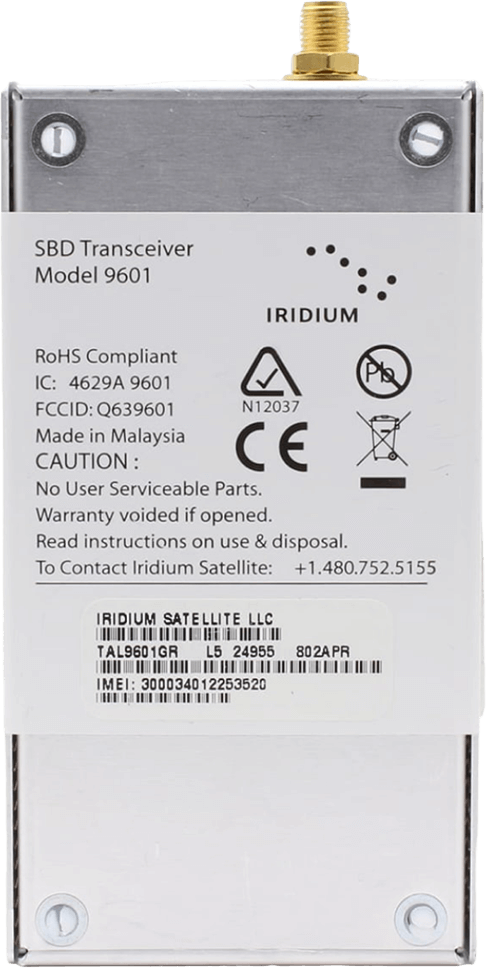
The Iridium 9601 was the first transceiver designed specifically to support the Iridium Short Burst Data® (SBD®) service. Development and design of the Iridium 9601 were driven heavily by U.S. government customers, specifically the National Oceanic and Atmospheric Administration (NOAA) and the National Science Foundation (NSF), seeking a small form factor with few moving parts for use in ocean profile floats and buoys. In order to make the transceiver more resistant than previous transceivers with SBD capability (like the Iridium 9522, Iridium 9522A, and Iridium 9522B), the Iridium 9601 was developed as the first SIM-less SBD transceiver, making it less susceptible to movement, vibrations, and shock. With its low-cost and compact design, the Iridium 9601 was ideal for tracking, monitoring, and safety applications that required a global connection. While the transceiver was initially designed with U.S. government customers in mind, the Iridium 9601 was launched for both U.S. government and commercial customers.
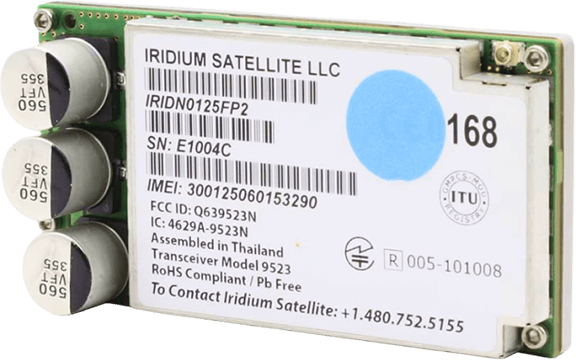
As Iridium’s smallest, lightest, and most advanced satellite transceiver module at the time of its introduction, the Iridium Core 9523 was over 90 percent more compact than the Iridium 9522B. Featuring standardized connectors, it was designed to easily integrate into new partner products, encouraging existing and new Iridium value-added manufacturers to continue building Iridium Connected technology to reach previously underserved markets and drive global communications in ways previously never thought possible.
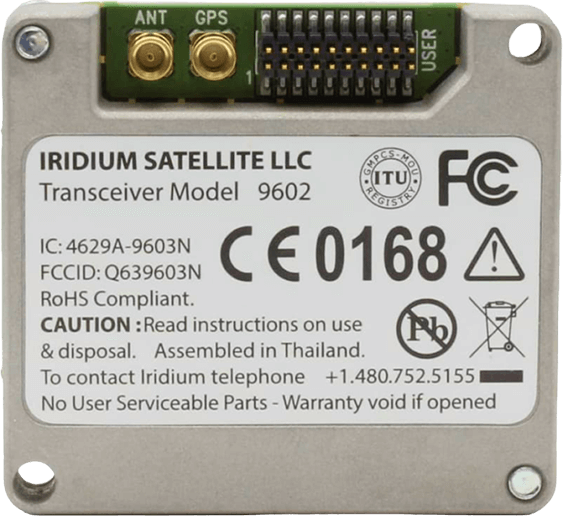
Expanding on the success of the Iridium 9601 and the company’s Short Burst Data service, Iridium introduced the Iridium 9602 to address customer and consumer needs in the machine-to-machine (M2M)/internet of things (IoT) space. This transceiver’s compact design made it even easier to integrate SBD tracking features into Iridium Connected partner products and expand the range of applications Iridium could support. Designed for integration into complete, end-to-end wireless solutions, the Iridium 9602 was ideal for IoT solutions like automatic vehicle location, asset monitoring, and marine and personal tracking applications.
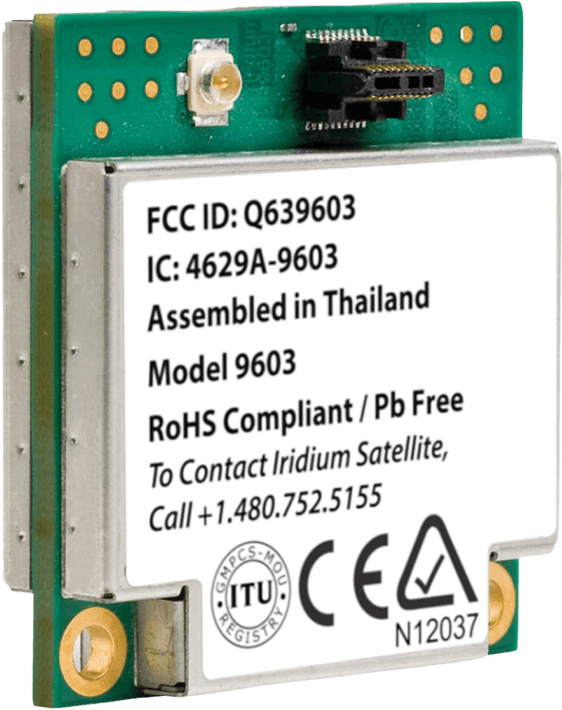
As Iridium’s Internet of Things (IoT) business grew, the company continued to innovate and develop new technology to support its value-added partners. At one-fourth the volume and half the size of the Iridium 9602, the Iridium 9603 was introduced as the world’s smallest commercially-available two-way satellite data transceiver. The introduction of the Iridium 9603 expanded the potential applications for Iridium Connected technology, allowing partners to develop solutions in space-constrained places where communication is critical. In addition to supporting the asset monitoring and tracking applications of the Iridium 9602, the Iridium 9603 opened up new opportunities for partner solutions in fleet management, environment and safety monitoring, and remote automation and control.
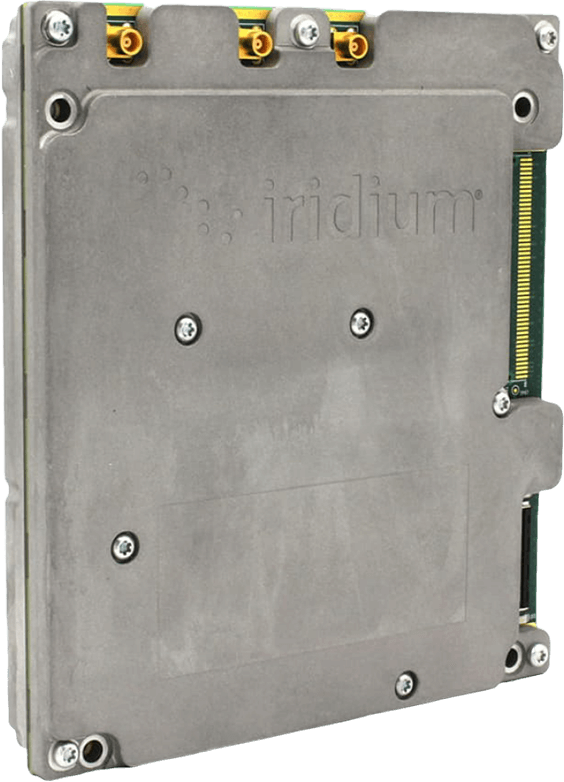
The Iridium Certus 9810 was the first Iridium transceiver built to support the services on the Iridium Certus platform. Built to enable speeds up to 704 Kbps, this transceiver was a scalable, multi-service module that enabled Iridium’s value-added partners to develop new Iridium Connected products specifically for Iridium Certus. Combined with a new open interface and API, Iridium Certus 9810 supported higher speeds and allowed Iridium partners to use IP data to quickly add capabilities such as web browsing, email, streaming, video file transfer, and more.
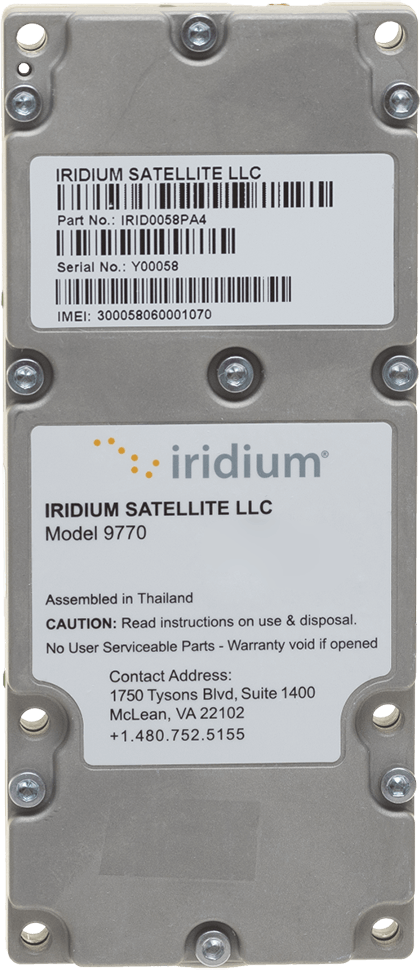
The Iridium Certus 9770 transceiver provides concurrent IP data and voice services in the Iridium Certus 100 service class. The Iridium Certus 9770 was designed to scale back to midband speeds on the Iridium Certus platform, allowing value-added manufacturers to build smaller, lower-cost, more power-sensitive products in response to market needs.

Optimized for solutions with strict size, weight, and power requirements, Iridium Certus 100 was designed to provide reliable, truly global connectivity for vehicles, vessels, and aircraft all over the world. With speeds up to 88 Kbps, Iridium Certus 100 was created as the ideal solution for tracking, personal communications, and safety applications.

With upload and download speeds up to 176 Kbps, Iridium Certus 200 was designed to provide reliable, truly global coverage through small, lightweight, low-power equipment. From high-quality voice calling on-the-move to internet and messaging and critical remote applications, Iridium Certus 200 was created as an affordable broadband connectivity solution anywhere in the world.

With top download speeds up to 704 Kbps, Iridium Certus 700 delivered the fastest L-band solutions available, unmatched in speed, coverage, and reliability. Whether staying connected with loved ones while at sea, responding to an emergency situation, or maintaining business continuity, Iridium Certus 700 was designed to provide a superior platform to deliver the most important information for customers.